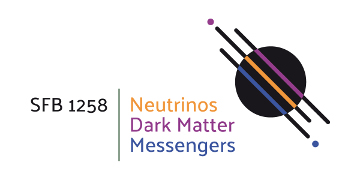The purpose of the unconventional telescope to detect signals from passing astrophysical neutrinos: tiny, extremely lightweight particles created by some of the most energetic and distant phenomena in the cosmos. IceCube’s founders believed that studying these astrophysical neutrinos would reveal hidden parts of the universe. Over the course of the next decade, they would be proven right.
First cosmic neutrinos detected in 2013
During its first few years of operation, IceCube accumulated vast amounts of data, but it wasn’t until 2013 that the observatory yielded its first major results. That year, the collaboration announced the first evidence for neutrinos from outside our galaxy with the detection of two very energetic neutrino events and, soon after, the observation of 26 additional very high energy events. Since then, IceCube has seen more astrophysical neutrinos and has made strides in the fields of neutrino physics, astrophysics, and multimessenger astronomy. From pinpointing potential neutrino sources to the recent detection of a Glashow resonance event, IceCube has proven the value of capturing perhaps the most elusive particles in the universe.
5,160 light sensors embedded in one cubic kilometer of ice
The deployment of IceCube took about seven years. Dozens of technicians, engineers, and scientists have traveled to the South Pole - one of the coldest, driest, and most isolated places on Earth - to build the biggest and most astonishing telescope in the world. Crews drilled 86 holes nearly two-and-a-half kilometers deep and lowered a cable strung with 60 basketball-sized light detectors into each hole. The result is a hexagonal grid of sensors embedded in a cubic kilometer of ice about a mile below the surface of the Antarctic ice sheet. On 18 December 2010, the 5,160th light sensor was deployed in the ice, completing the construction of the IceCube Neutrino Observatory.
High risk and high reward approach
“The IceCube Collaboration has delivered a decade of data that continues to validate the high risk and high reward approach,” says Francis Halzen, principal investigator of IceCube and professor at the University of Wisconsin–Madison where IceCube is headquartered. What started with a couple dozen scientists including Elisa Resconi, now Professor for experimental physics with cosmic particles at TUM and head of the TUM IceCube team, is meanwhile the international IceCube Collaboration with a group of over 350 scientists from 53 institutions in 12 countries across five continents.
IceCube-Gen2 is in preparation
The unusual instrument continues to expand: Though the pandemic has slightly altered the timeline, the National Science Foundation has provided funding for the next stage of our South Pole detector, the IceCube Upgrade, which will pave the way to the proposed larger, high-energy extension, IceCube-Gen2.
The IceCube Neutrino Observatory is funded primarily by the National Science Foundation. IceCube’s research efforts, including critical contributions to the detector operation, are funded by agencies in Australia, Belgium, Canada, Denmark, Germany, Japan, New Zealand, Republic of Korea, Sweden, Switzerland, the United Kingdom, and the United States. IceCube construction was also funded with significant contributions from the National Fund for Scientific Research (FNRS & FWO) in Belgium; the Federal Ministry of Education and Research (BMBF) and the German Research Foundation (DFG) in Germany; the Knut and Alice Wallenberg Foundation, the Swedish Polar Research Secretariat, and the Swedish Research Council in Sweden; and the University of Wisconsin-Madison Research Fund in the U.S.



